World 🢖 Europe 🢖 France 🢖 Provence-Alpes-Côte d’Azur
Springs 🢔 Geological wonders 🢔 Categories of wonders
Wonder
Fontaine-de-Vaucluse (Vaucluse Spring)
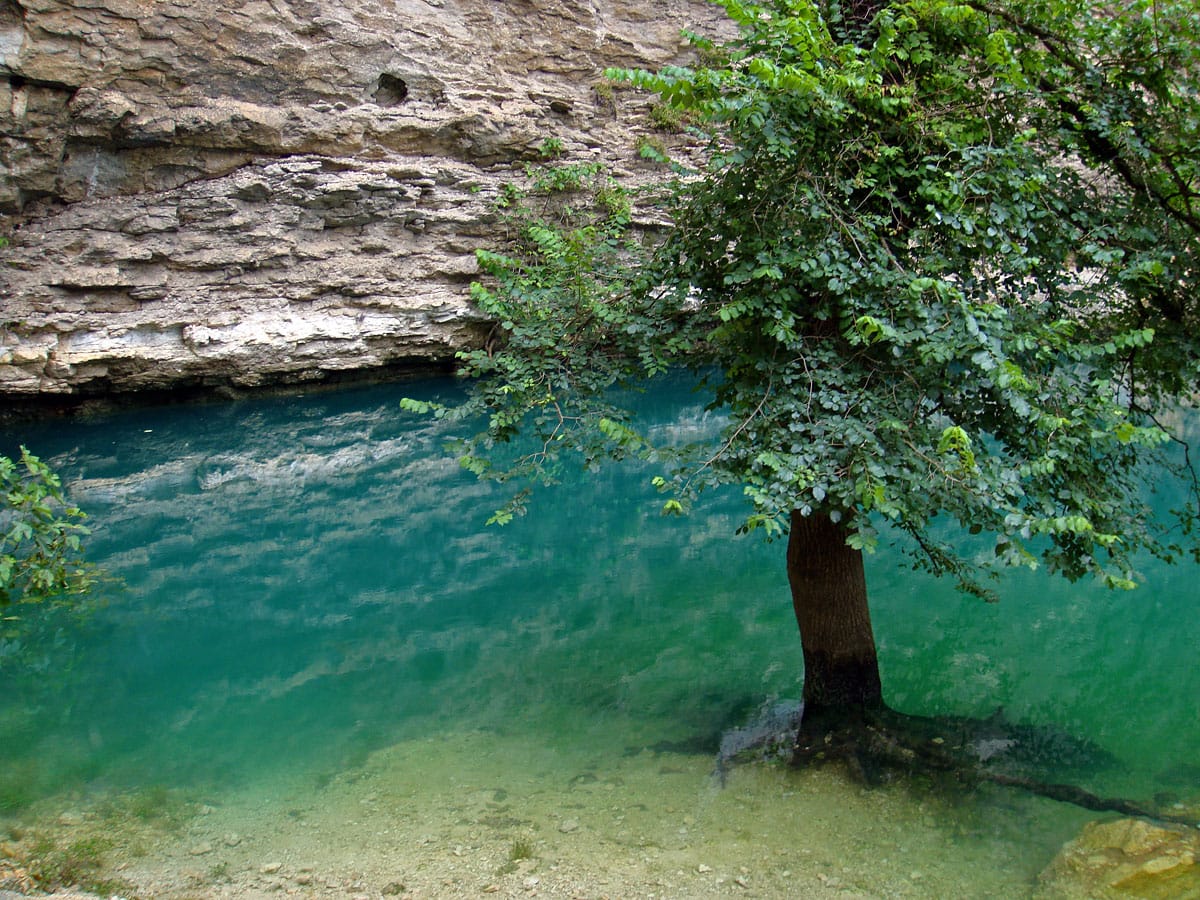
 In short
In short
The largest spring in France and one of the most powerful springs in the world is Fontaine-de-Vaucluse. This outstanding monument of nature is also a site of legends and ancient shrine.
 45.0%
45.0%
GPS coordinates
Location, address
Type
Average discharge
Depth
Map of the site
If you see this after your page is loaded completely, leafletJS files are missing.
 In detail
In detail
20 cubic metres of water per second
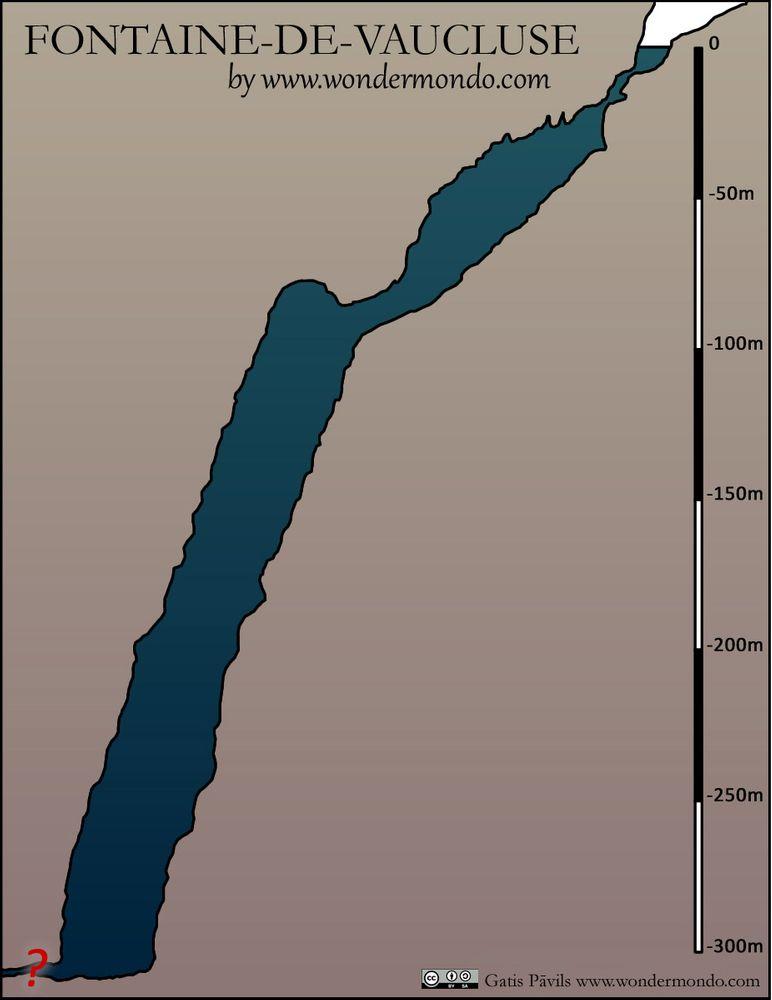
The spring is the main outflow for a 1,100 – 1,250 km² large, mountainous area – Mount Ventoux. This area is formed from a very thick (up to 1,5 km) Lower Cretaceous limestone layer. Limestone is fractured and easily permeable to the groundwater.
The altitude of this area fluctuates from 85 to 1,909 m and in some places up to 800 m thick layer of limestone is rising above the groundwater level.
Huge lots of water are collected in this area and most of it leaves Mount Ventoux through Fontaine-de-Vaucluse. There is much less water in the spring in summer, but in the spring it becomes powerful and fiery, emitting up to 90,000 – 120,000 l/s.
Annual flow in Fontaine-de-Vaucluse is 630 – 700 millions m³ – thus the average flow is 20 – 22 m³ every second. Water has a constant temperature of 13 degrees.
Spring is source of Sorgue river and since the 13th century has powered many mills on this river.
Dissolving the mountain
The water of the spring contains 200 mg/l CaCO3. It has been calculated that every year 50,000 m³ of dissolved limestone flow through the spring.
This process makes the voids below the water level larger and larger, more and more lime is deposited along the shores of the Sorgue river. If such a process would continue undisturbed, in 3.5 million years all the limestone above the aquifer of this spring would be gone.
Well at the base of rock wall
The name of this location is coming from Latin "Vallis Clausa" – closed valley. Vaucluse really is magnificent "hole" in the earth, surrounded from three sides by incredibly tall, up to 230 m high walls.
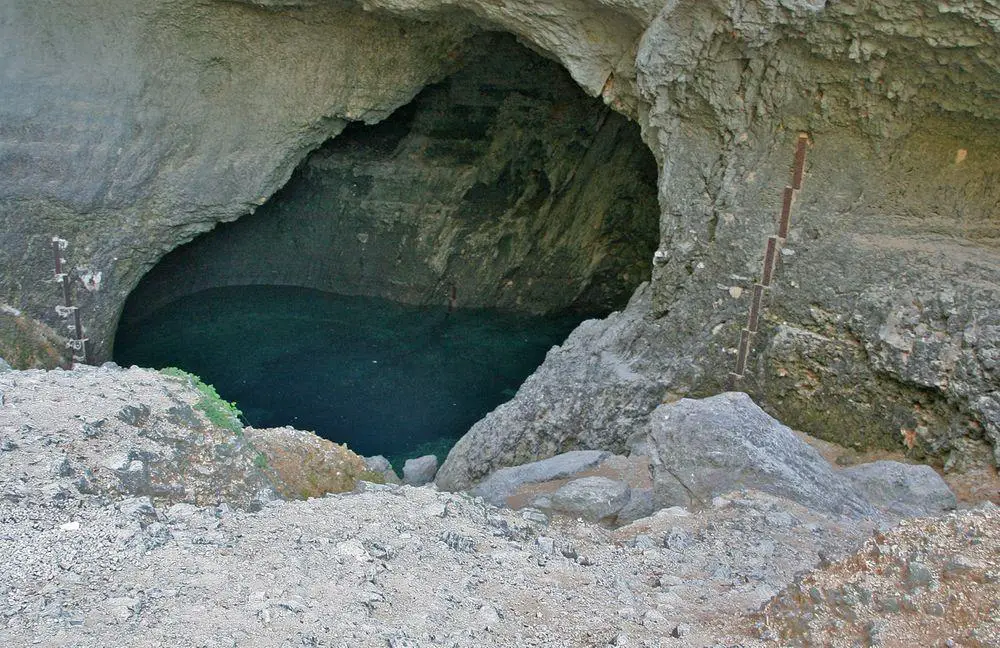
The spring flows from a deep well at the base of this wall. It serves as a reference case for the so-called springs of Vaucluse type (vauclusian springs) – springs that are emitting from deep, steeply inclined, water-filled passages and have small surface pools.
In earlier, prehistoric times the entrance part of the spring was a part of a cave system, which one day collapsed.
In the summer one should descend some 10 m deep in the well to reach the deep blue lake. In the spring though it overflows and a fierce, powerful stream comes out from this well.
The lake itself is just a top of incredible, 308 m deep well.
Exploration of the Fontaine-de-Vaucluse well
Fontaine-de-Vaucluse was one of the first locations, where cave diving took place: in 1879 Nello Ottonelli with heavy brass helmet diving equipment dived to 23 m depth.
In 1946 here was tested another generation of diving equipment – the early scuba diving system Aqua-lung. Jacques-Yves Cousteau dived up to 46 m deep with it and in 1955 – 74 m deep.
The bottom of the well was further below though. The diving into the spring turned out to be a very dangerous activity and in 1974 the diving was prohibited here. Nevertheless, some desperate divers came here – Claude Toulomdjian dived to 153 m depth in 1981 and Jochen Hasenmayer – to 205 m depth in 1983.
The full depth though was explored by robots. Already in 1967 a robot Télénaute was used with success and reached 106 m depth. Some robots though fell victims to the deceitful depth – a device named Sorgonaute III still is there. In 1985 a robot Modex 350 reached 305 m depth and in 1989 Spélénaute – 308 m what is considered to be a full depth of the well of Fontaine-de-Vaucluse.
Well has also side branches, which are not fully explored yet.
Ancient cult site
This beautiful site has attracted people since ancient times.
Divers have found a huge amount of offerings – coins – in the well. In total there have been extracted some 1,600 artifacts, mostly coins produced in 80 BC – 450 AD. Most coins are made in Rome, but some also in Nîmes, Lyon, and Trier and even in Greece, Thessaloniki. The tradition of these offerings has not ceased – new coins are thrown in the spring up to this day.
Legend about Coulobres
Once upon a time in the spring lived a winged snake – a dragon Coulobres. This enormous beast was attacking and eating people in the area around Fontaine-de-Vaucluse.
The dragon was exterminated by a Saint Veran, Bishop of Cavaillon, who drove it to the Alps, where the dragon died.
It is considered that this legend has its roots in more ancient Celtic rituals at this site. The word "Coulobres" has Celtic roots: Kal is stone and Briga – hill.
References
- Fontaine-de-Vaucluse, official site. Accessed on September 24, 2011
 Linked articles
Linked articles
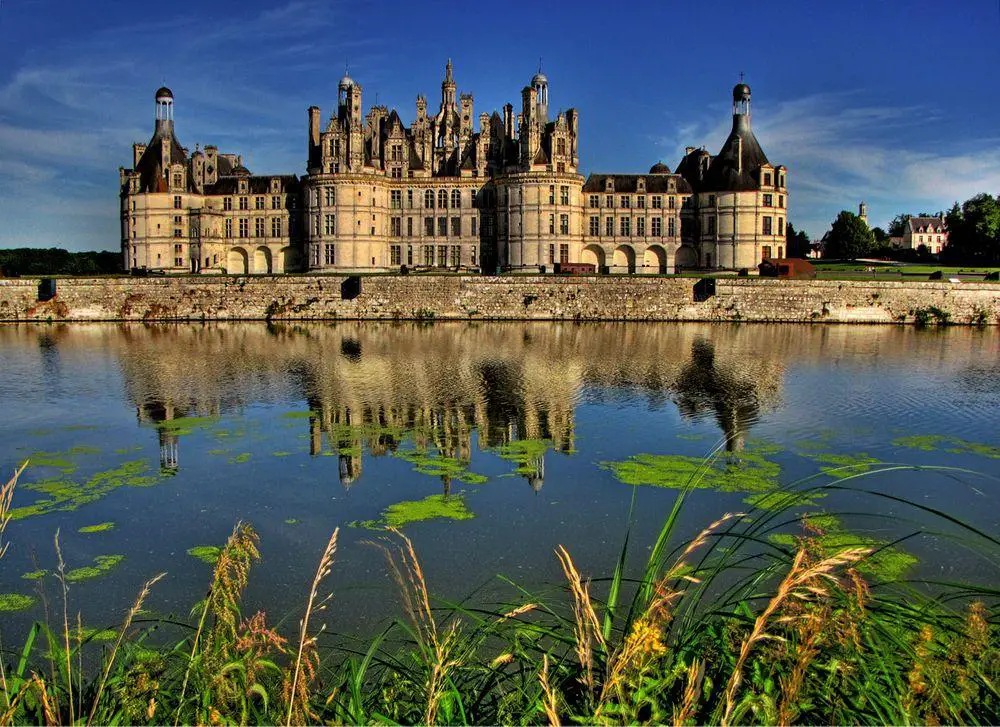
Wonders of France
France is home to many of the best-known landmarks in the world. This country is literally crammed with thousands and thousands of the most diverse attractions.
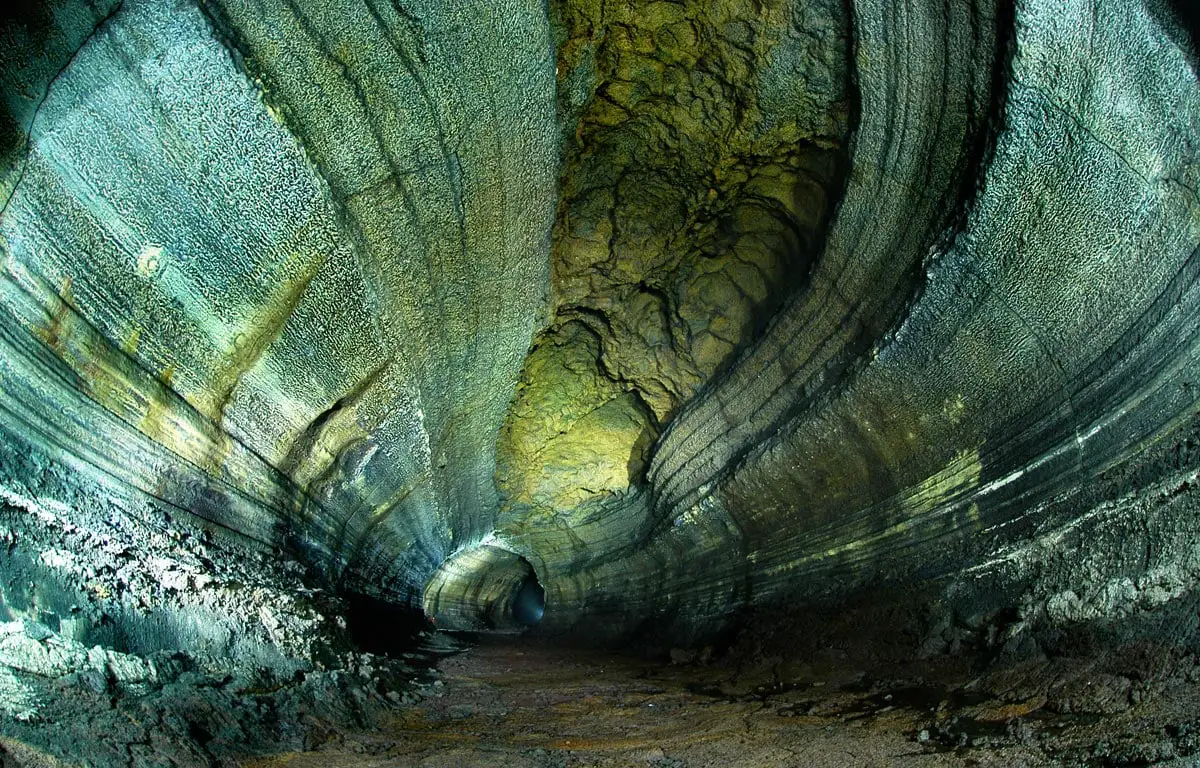
Caves
Every year there are reported exciting discoveries of new caves and discoveries of new qualities such as cave paintings in the ones known before. But there still is a feeling that our knowledge covers just a small part of all these monuments of nature.
Though, those which are known to us, offer a surprising diversity of unusual features and impressive sights.
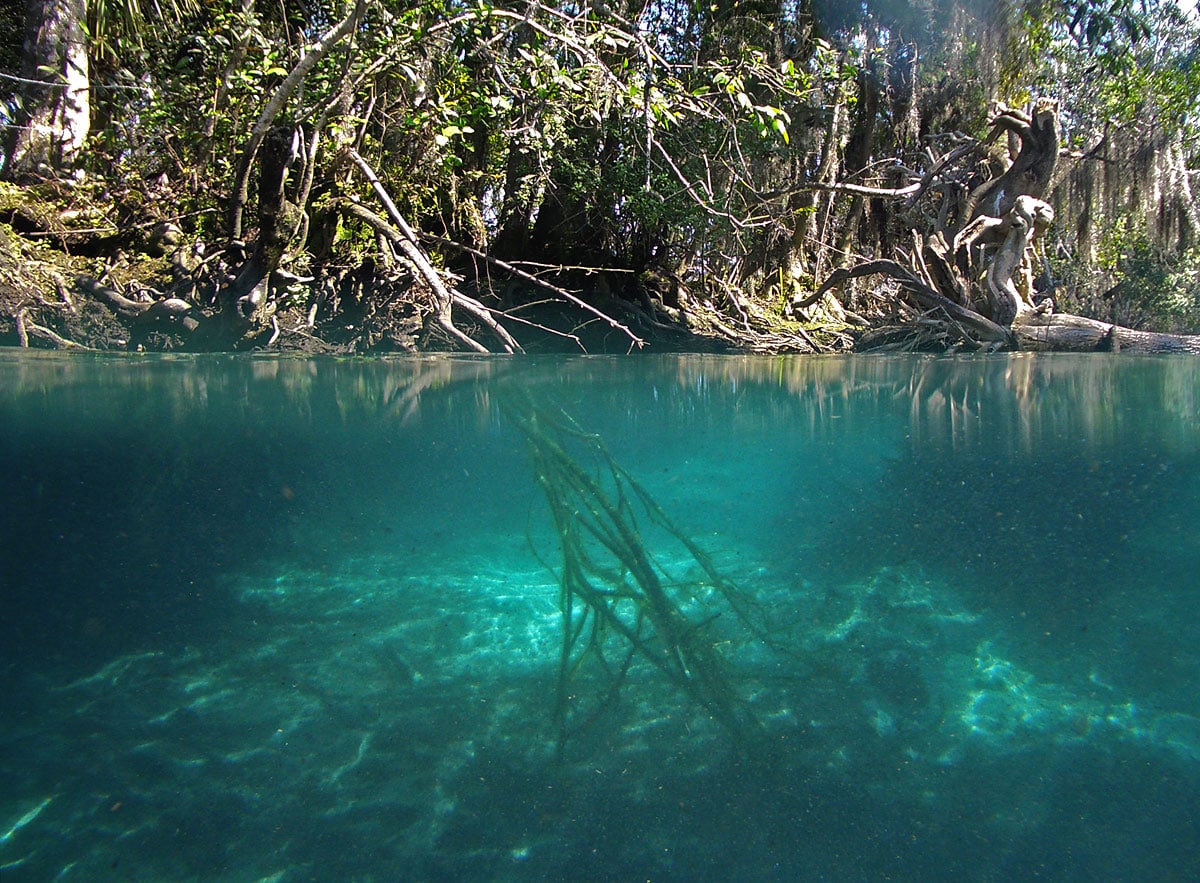
Springs
Powerful natural freshwater springs belong to the most fascinating monuments of nature. Even more exciting is the diversity of unusual springs – mineral springs, hot springs, submarine springs as well as the unusual black smokers. Especially beautiful are such natural rarities as travertine, silica, or salt terraces created by warm and hot springs and, especially, geysers.
 Recommended books
Recommended books



